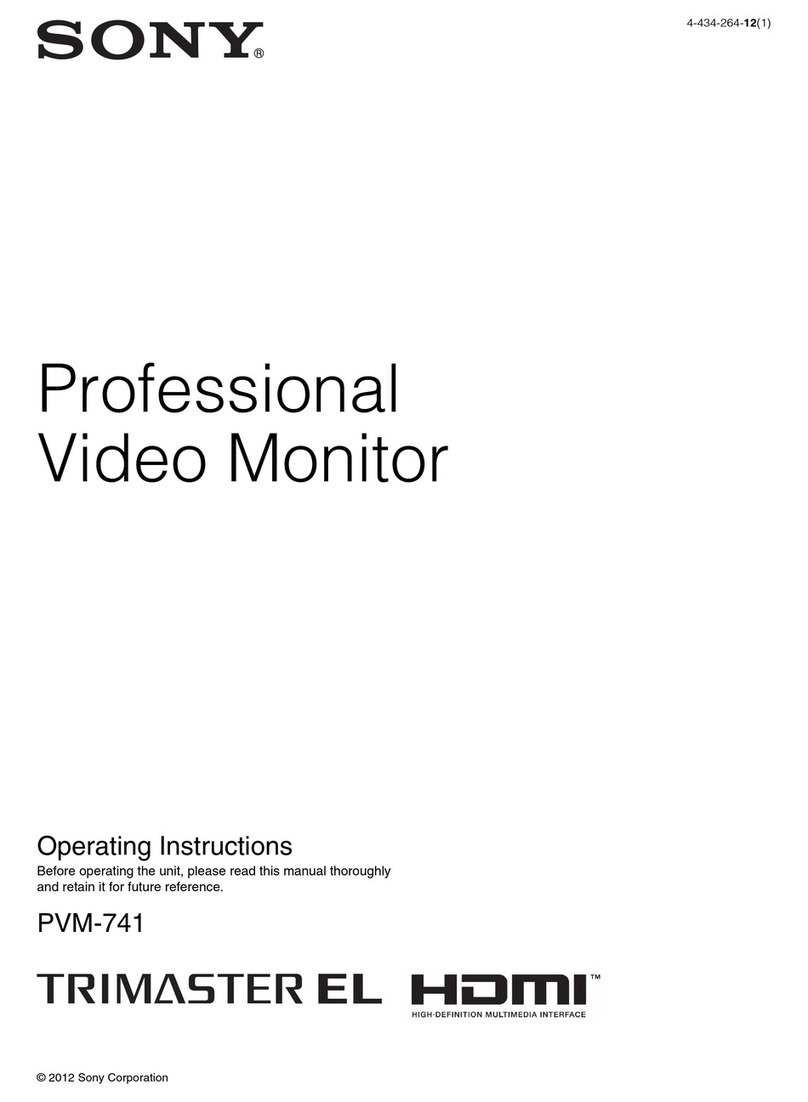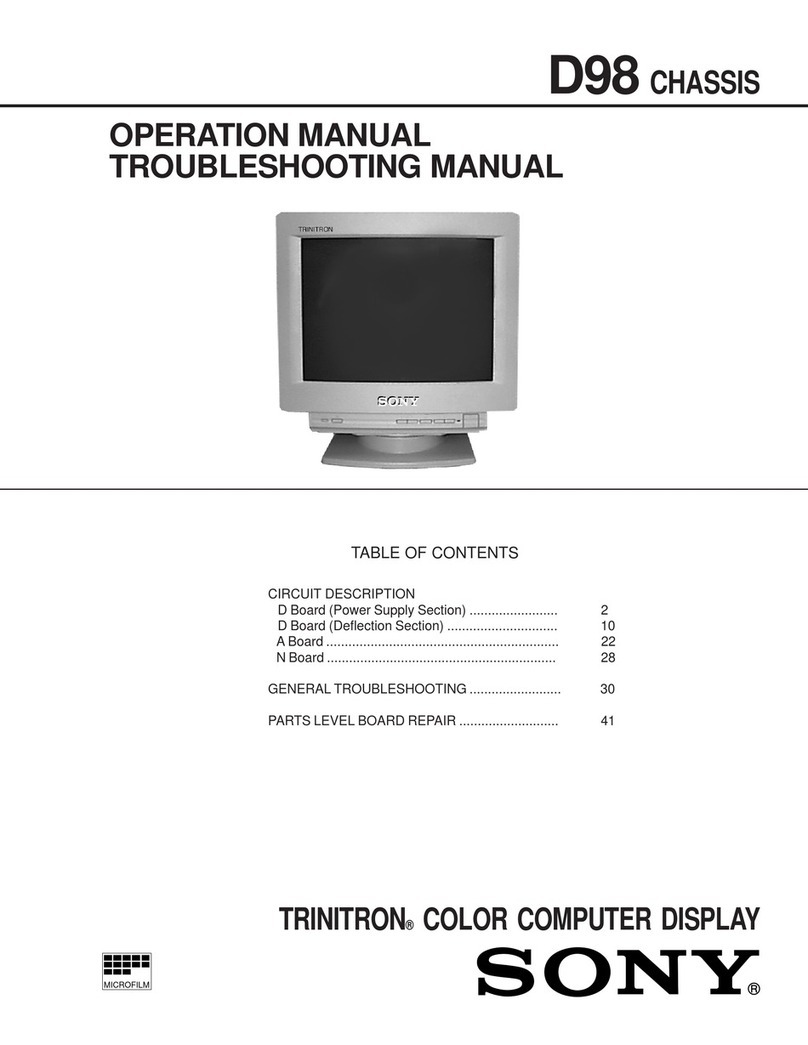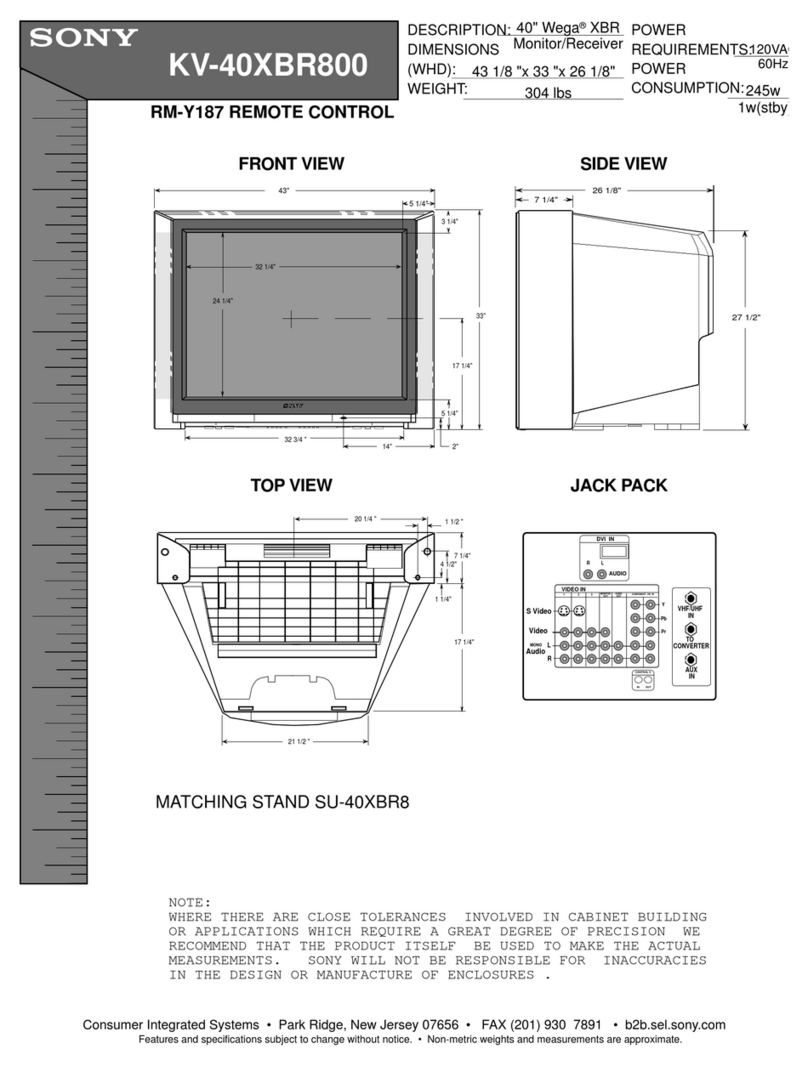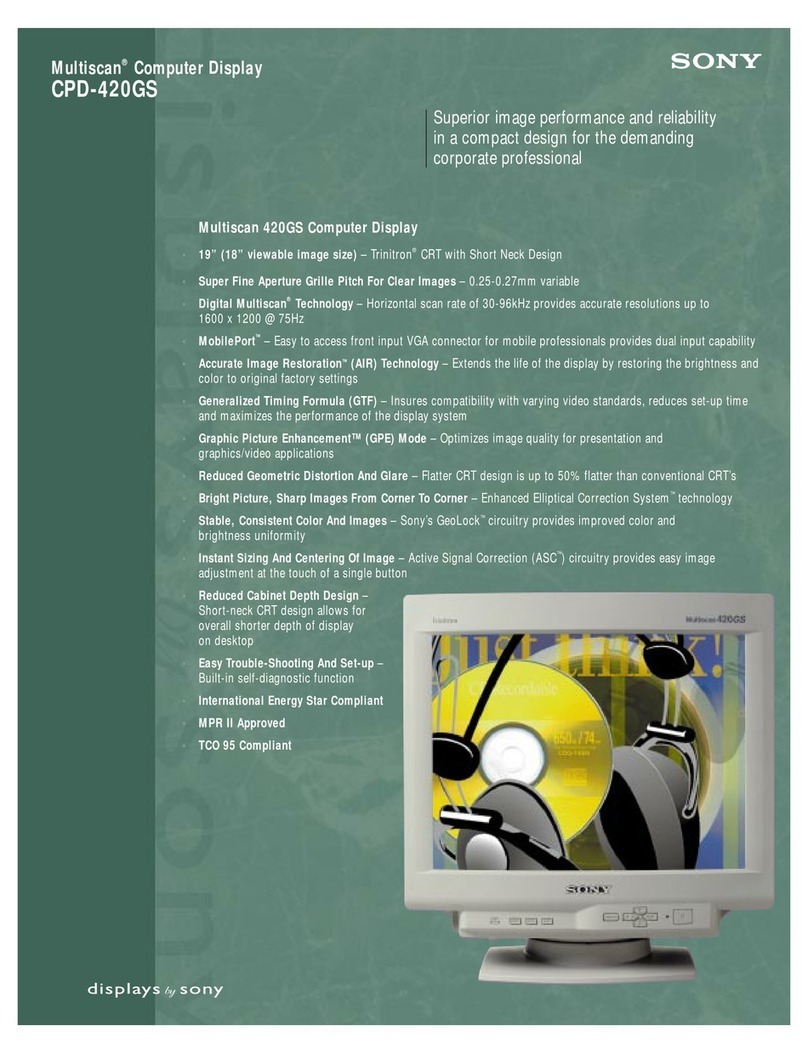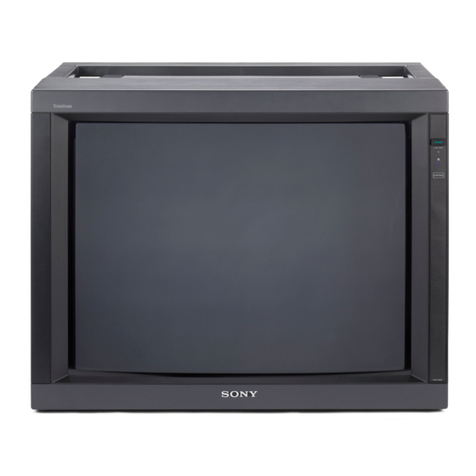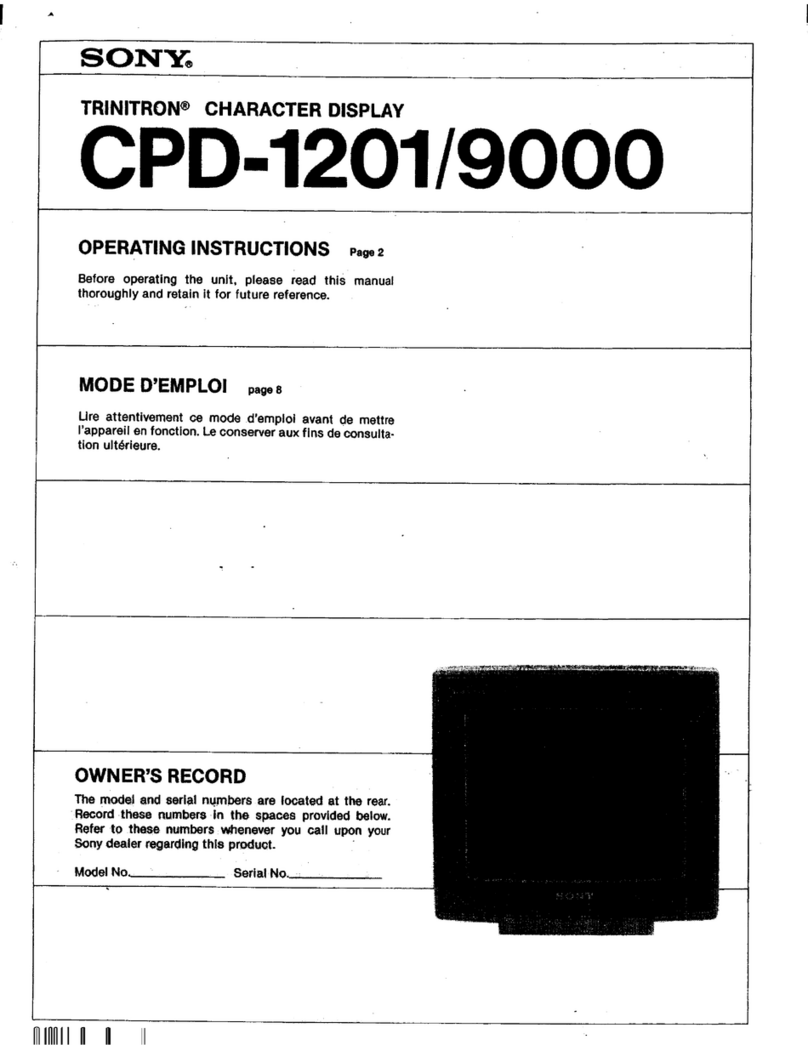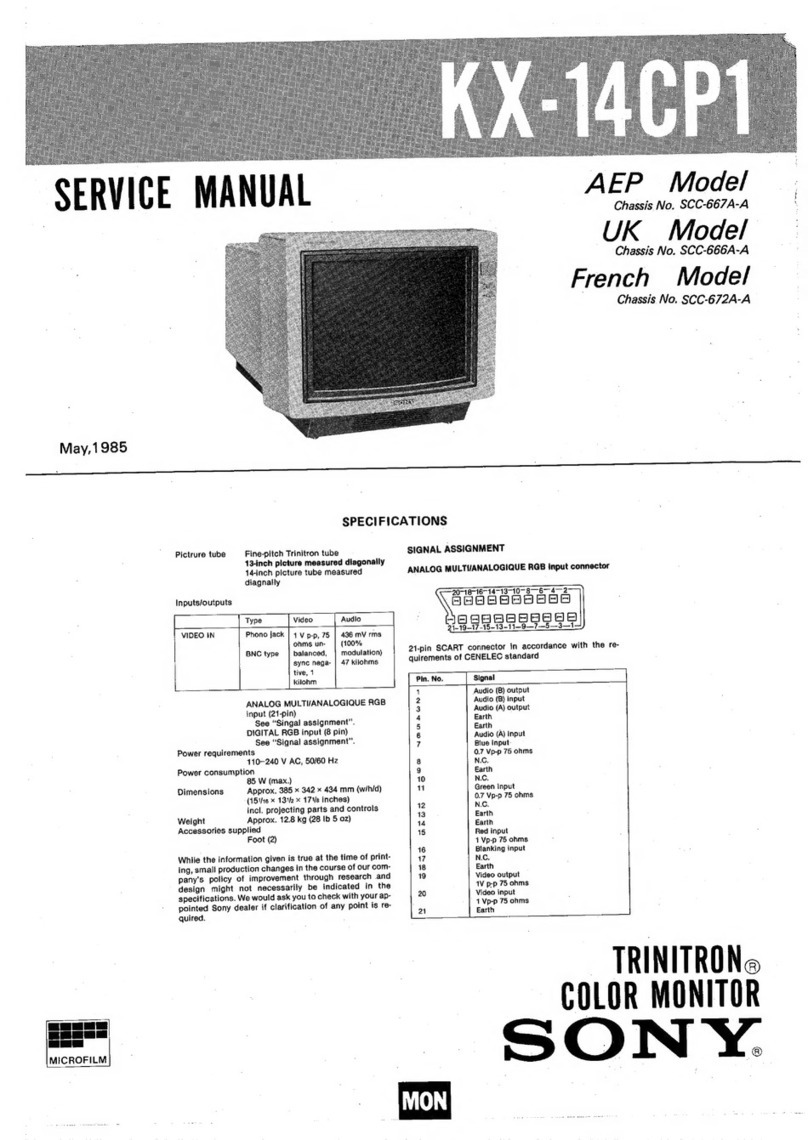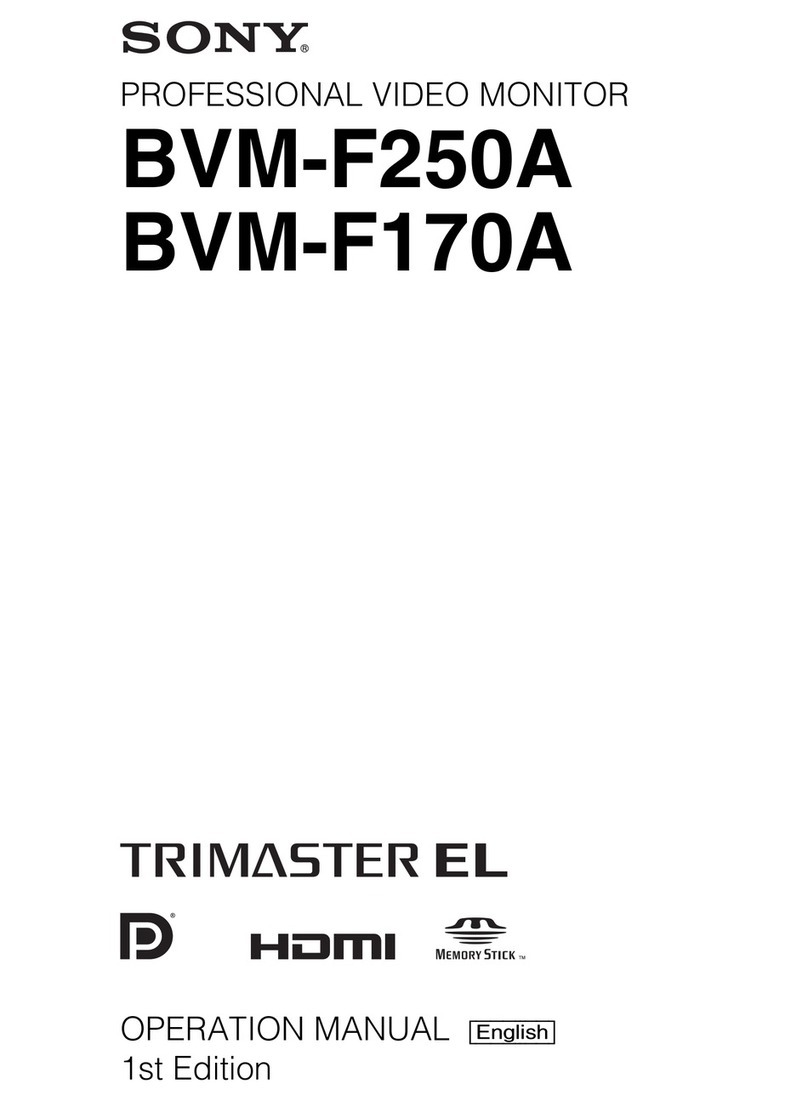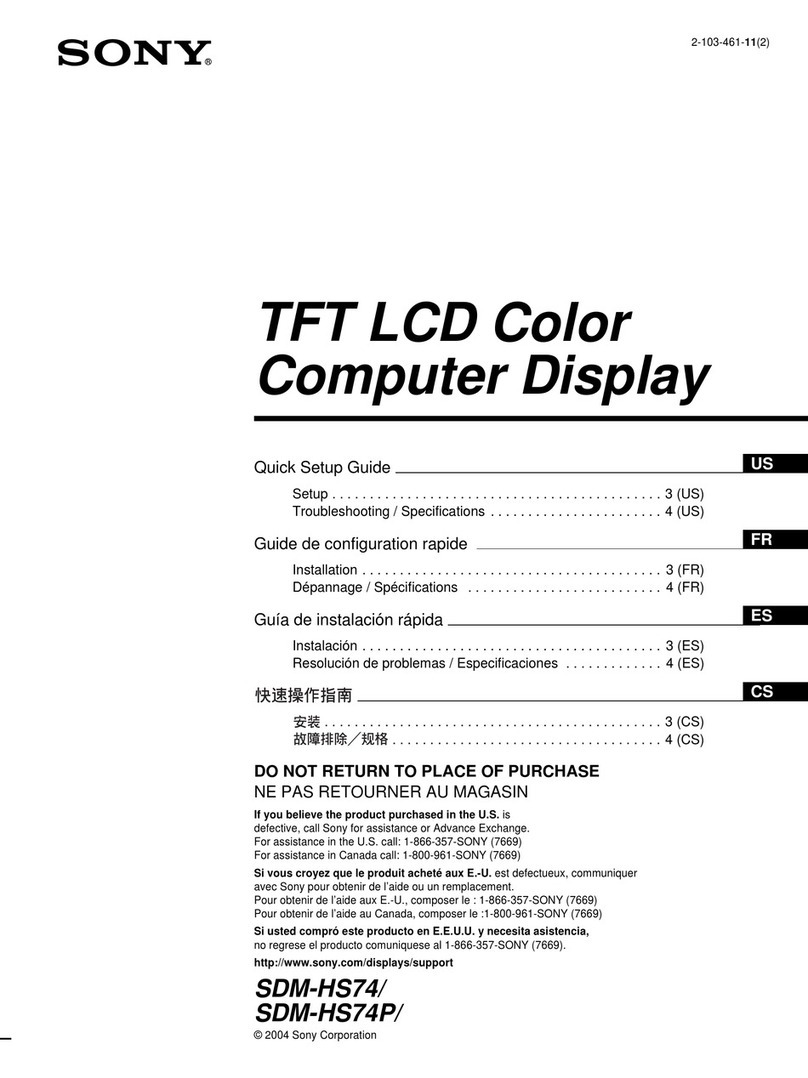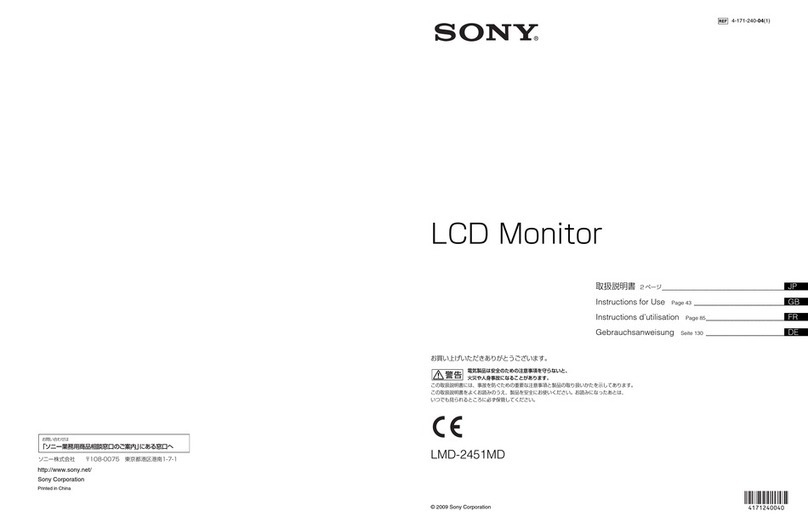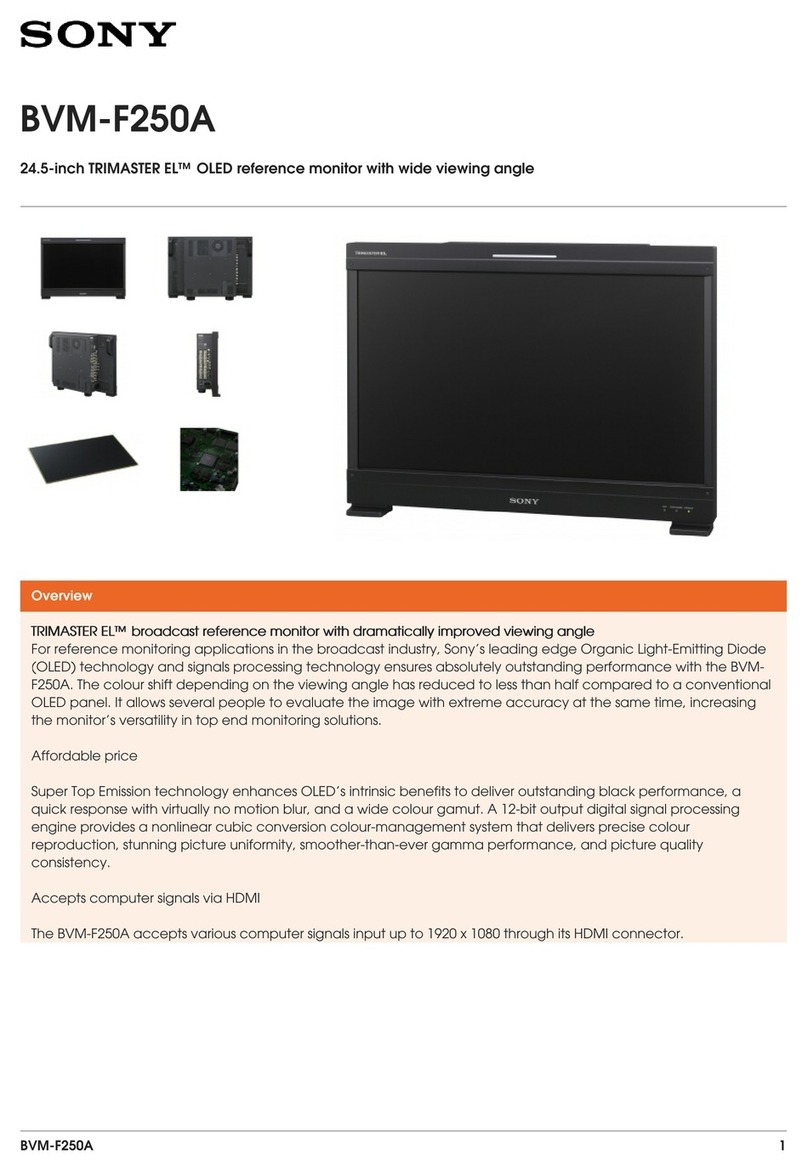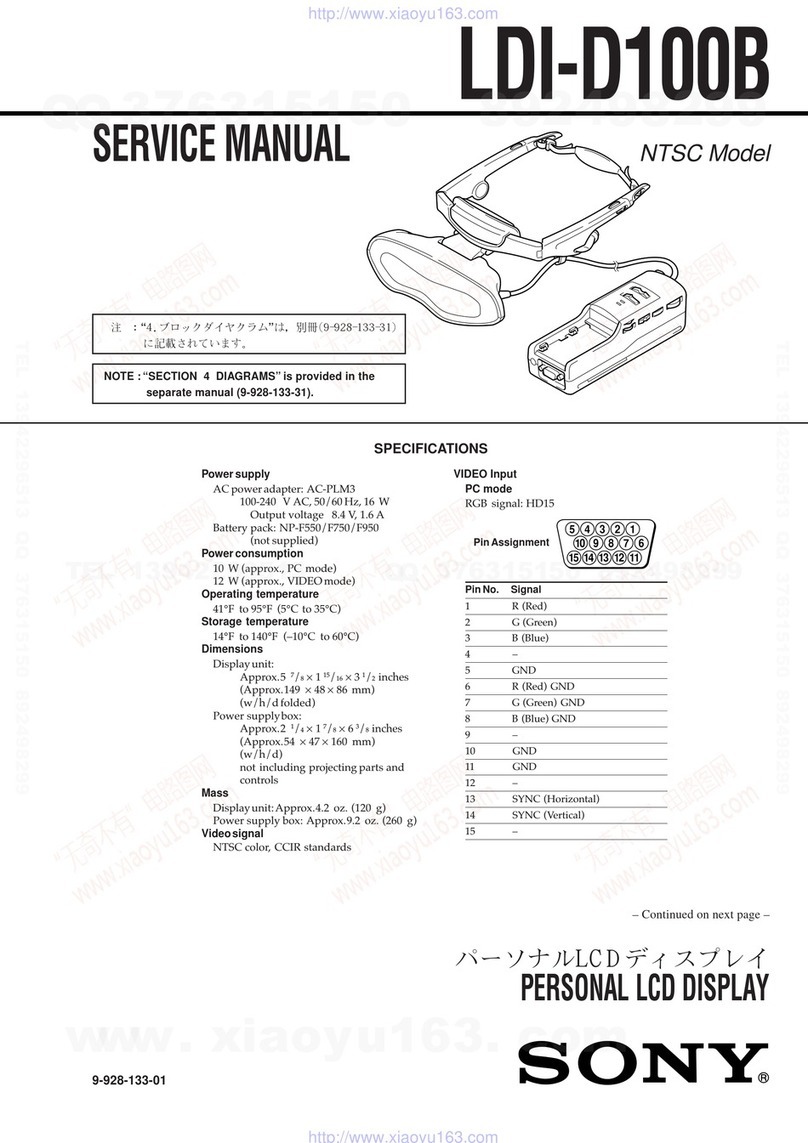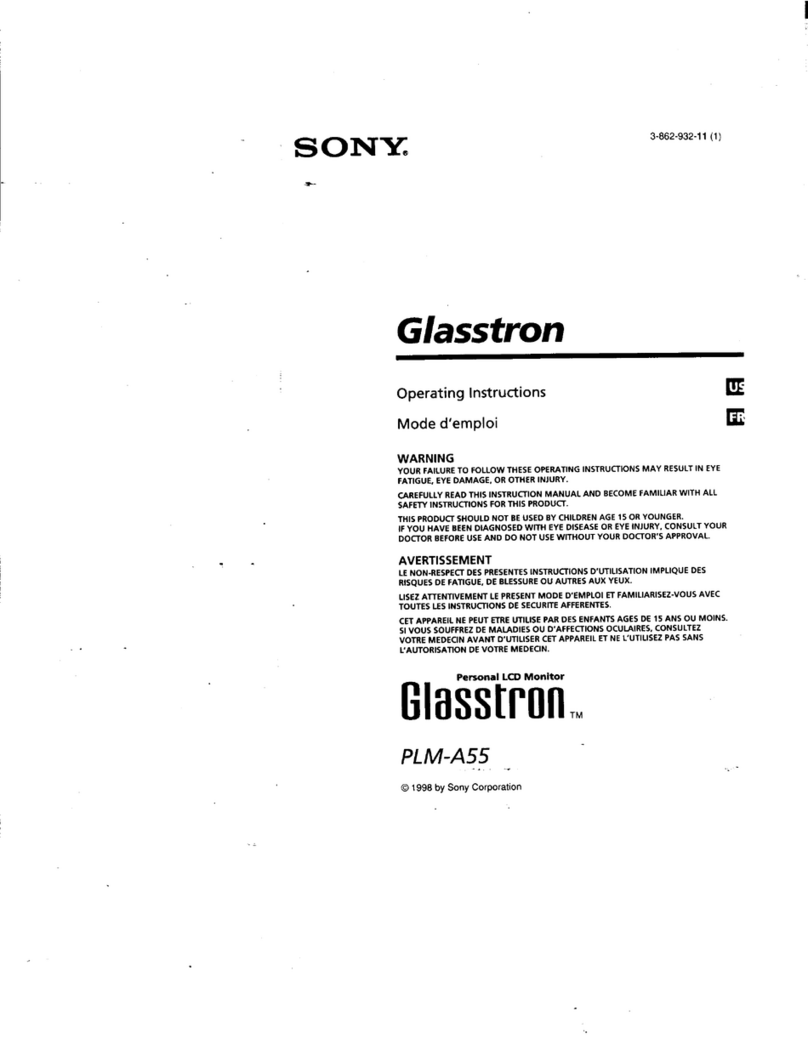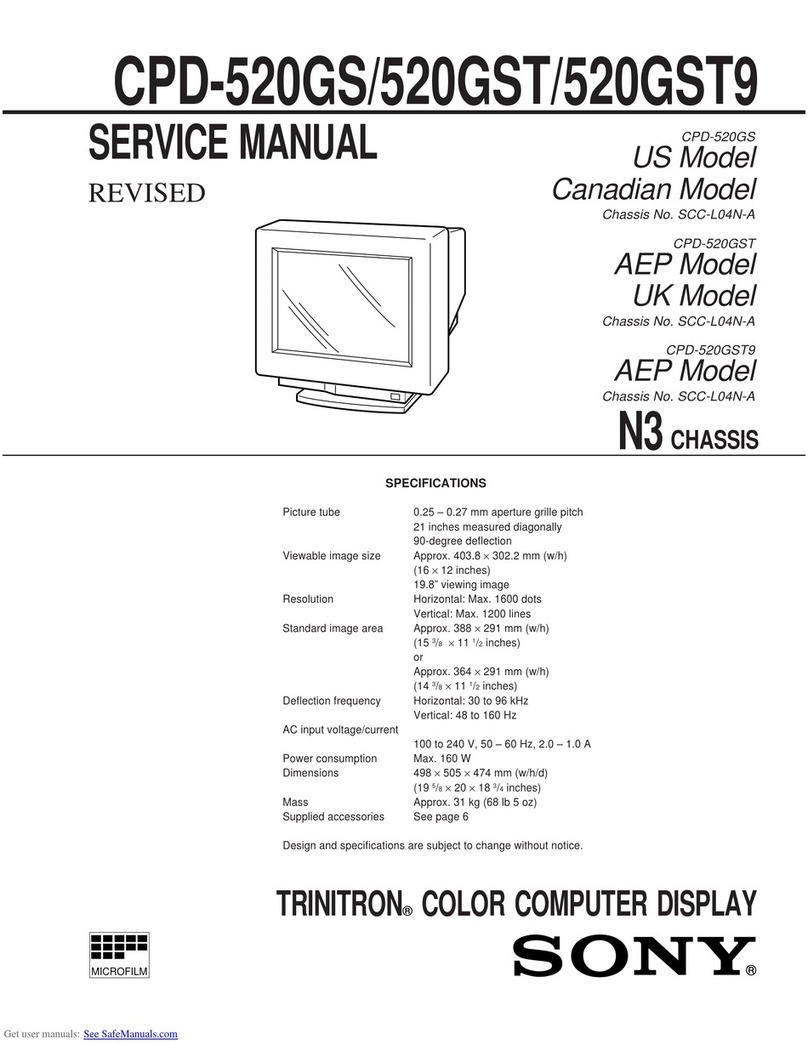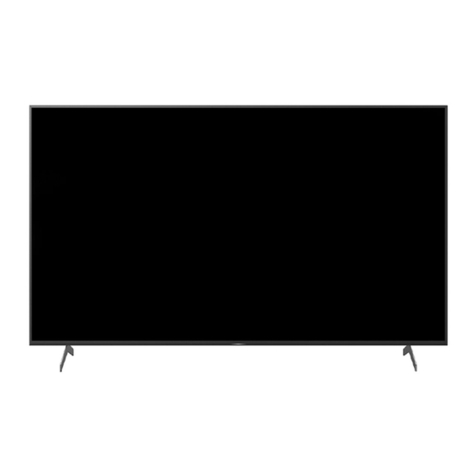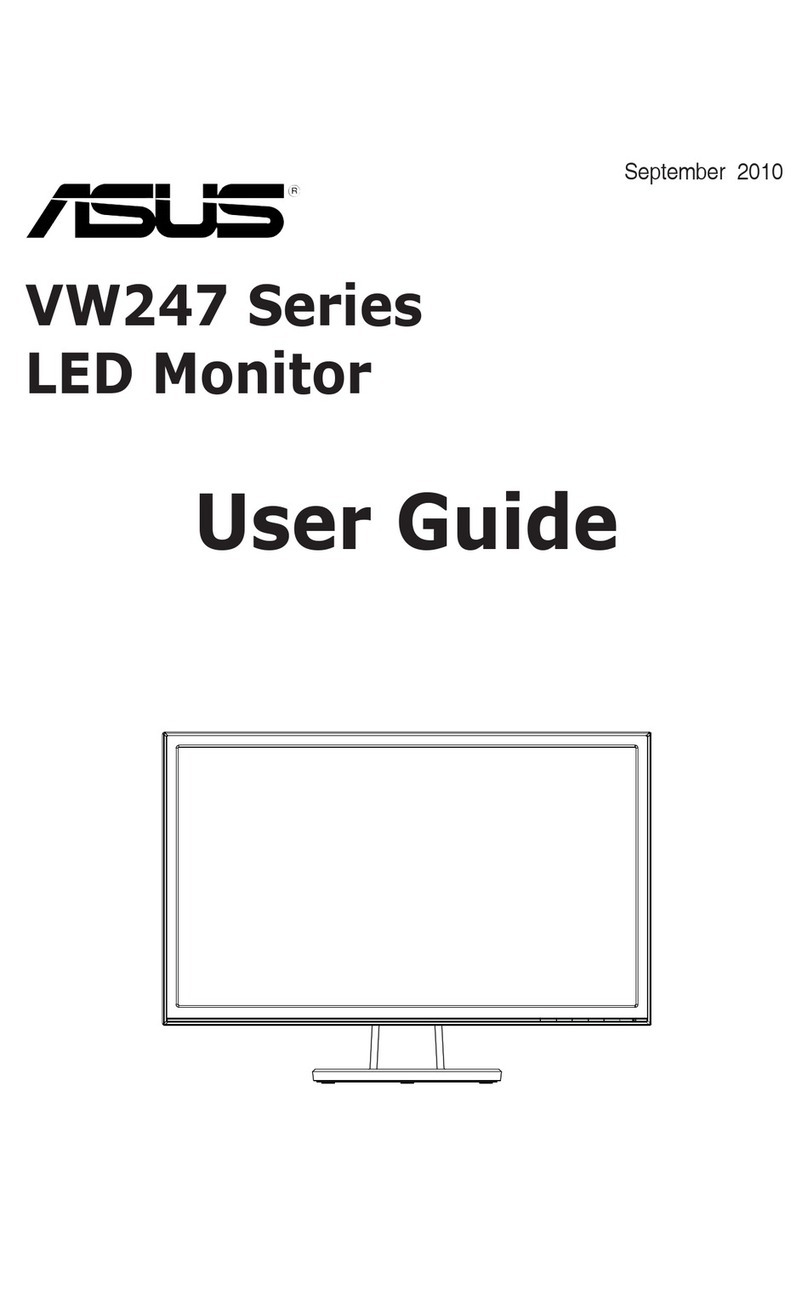
- 8-
No Power
In the event that the monitor does not turn on, first verify input power is applied to CN600 and the front panel power switch
is turned on; then check F601 and R605. If these parts are blown, the primary side circuitry should be checked. If the fuses
are not blown, then check the secondary side circuitry, especially the protection circuits. If these circuits are causing a no
power symptom, the problem can be more readily found.
AC Input and Degauss CircuitTrouble Shooting
For no power or nonoperating power supply, the AC input circuitry should be checked. Open or short circuit elements will
cause non-operation. F601, CN600, and R605 on the D Board should be checked first. Check the front panel power switch
for continuity.
If all elements are correct, check whether F601 breaks when power is applied and the power switch is closed. If the fuse
does blow, there may be problems with the primary circuitry or a component short.
The degauss will malfunction if CN601 is not connected. One problem could be loss of degauss signal from the micropro-
cessor. This can be verified by using the manual degauss command found in the OSD menu. If the signal does not appear at
Q601 base, then it is possible that the microprocessor does not function correctly or standby 5V is not functioning.
The second step is to place a short across theAC terminals of RY601 for less than two seconds. If degauss operates then
check Q601 and RY601. If degauss does not work, check TH601 for an open condition and VA600 for a short condition.
PrimarySection
Three main areas can diagnose primary circuit failures. These are IC601, Q602 and Feedback system.
Visible checks of these areas will aid in finding problems. The following will discuss each section.
IC601
First apply AC to the monitor and check IC601 pin 4 output. If the output on pin 4 is not present, there could be problems
with Q602 and related parts or pin 14 could be less than 2.5 volts. Further, check Vaux level at pin 6. If it less than 11
volts, the IC could be in safe-restart mode. If the voltage is very low, there could be a short on any of the IC pins. In
reference to ground, check the impedance of pin 1, 8 and 14. If any of these pins are shorted, replace the IC and check
components connected to the related pins. Take care that C617 and C616 are fully discharged before replacing the IC.
Q602
The switching transistor can be damaged in various ways. These are related to voltage, current and temperature.
Check whether the transistor is shorted across drain and source terminals. If there is a short, F601, R605, R614, R654,
R623, R624 and C650 should be checked. Additional components to check are D608, R612 and IC601. If Q602 is
shorted, all these parts should be replaced.
Failure of a secondary rectifier diode can also cause Q602 to fail. Check 180V and 80V diodes for open or short condi-
tions. There is also a clamp circuit, which is used to clip the turn off spike found on Q602 drain. If the clamp circuit is
broken, it can cause Q602 failures. Check D606, C612 and R635. Also check the snubber circuit components C613,
D607, R619 and R656.
SecondaryCircuit
Failure in the secondary circuits can be categorized by rectifier diodes, fusible resistors, regulators, feedback loops and
protection circuits. These sections are interrelated and failure in one can affect another. Consequently, some failures will
also affect the primary circuitry.
RectifierSection
Rectifier diode failures are not common, but do occur. Deflection, video and high voltage circuitry failures contribute to
diode damage. In the event a voltage is not present, check for shorts to ground, open or short diodes. Also check fusible
resistors found on the voltage lines.
HorizontalCentering
Loss of horizontal center adjustment can be affected by the rectifier diodes, fusible resistors, IC503 and related circuitry.
Measure the voltages in reference to the horizontal centering ground. Typically, the voltages are ±10 volts. However, the
adjustment setting can reduce the voltages. If there are no problems found with the diodes or fusible resistors, the next
step is to check the adjustment signal at Q506. If the adjustment signal is not present check the IC901 pin 4. Otherwise,
check IC503 and related components.

